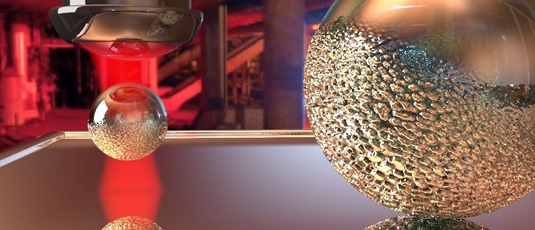03/12/2015
Tiny glass nanospheres coated on one side with a very fine gold film: LMU scientists have shown that particles modified in this way can be moved about with high precision using laser beams, creating an optically controlled micro-elevator.
They owe their name to the two-faced Roman god Janus. Symbol of the turning year, Janus looks back and looks forward at the same time, just like so-called Janus particles, which display two different faces to the world. A research team led by the LMU physicists Professor Jochen Feldmann and Dr. Alexander Urban, both affiliated with the Nanosystems Initiative Munich (NIM) Cluster of Excellence, has now synthesized a class of Janus particles which, thanks to the distinct properties of their two hemispheres, can be manipulated with unprecedented precision with laser beams.
If a laser beam is focused by the lens of a microscope, it can be used as an optical tweezers to trap a nanoparticle at the focal point of the beam. The effect makes use of the forces exerted by the scattering of the light waves that impinge on the particle. “The ability not just to trap particles, but also to control their displacement by means of laser light would be extremely useful for a wide range of applications, such as the analysis of liquid samples with the aid of microfluidics chips,” says Urban. But up to now, optical tweezers for this purpose was hampered by the fact that the position and direction of displacement of particles could not be controlled with sufficient precision.”
Asymmetric gilding allows manipulation
Urban’s team has now overcome this limitation, by using quite a simple trick: The scientists introduced an asymmetry into the system by coating glass nanospheres with a wafer-thin layer of gold on one face. This layer is only 5 nanometers thick, about 20 times thinner than gold leaf“, says Urban. The gold-coated hemisphere of such a so-called Janus particle heats up when irradiated by the laser beam, while the glass side is unaffected because it is not metallic and does not conduct heat. If such a Janus particle is placed in water, heating of the gold surface generates a temperature gradient, which causes the particle to move upwards toward the light source.
Control of the direction of movement
How far it moves and in which direction can be precisely controlled by modifying the balance of forces exerted by the laser on the particle: Scattering forces control the orientation of the particle in space and confine it within the beam, while the intensity of the laser can be used to alter the level of heating and hence to regulate the distance traversed by the particle in the third dimension. Thus, by varying the laser power, the researchers can raise or lower the level of the particle within the laser beam, as if it were a passenger in an elevator: Increasing the intensity of the beam causes the particle to rise; reducing the power results in downward motion.
“This new technique allows one to control particle motions with unprecedented precision and can be used in many different and interesting settings“, says Urban. Indeed, the scientists have already taken a further step by successfully using laser beams to capture a gold nanosphere together with the new Janus particle and then showing that they could change the distance between the two particles at will. “This demonstrates that our laser-powered ‘elevator’ provides a versatile tool for use in basic research as well as in many practical applications. It could, for example, serve as the basis of a device for the measurement of extremely weak forces, in which a molecule is suspended between particles and one could use the laser to measure the force required to pull the particles apart,” says Urban.
(ACS Photonics 2015)















